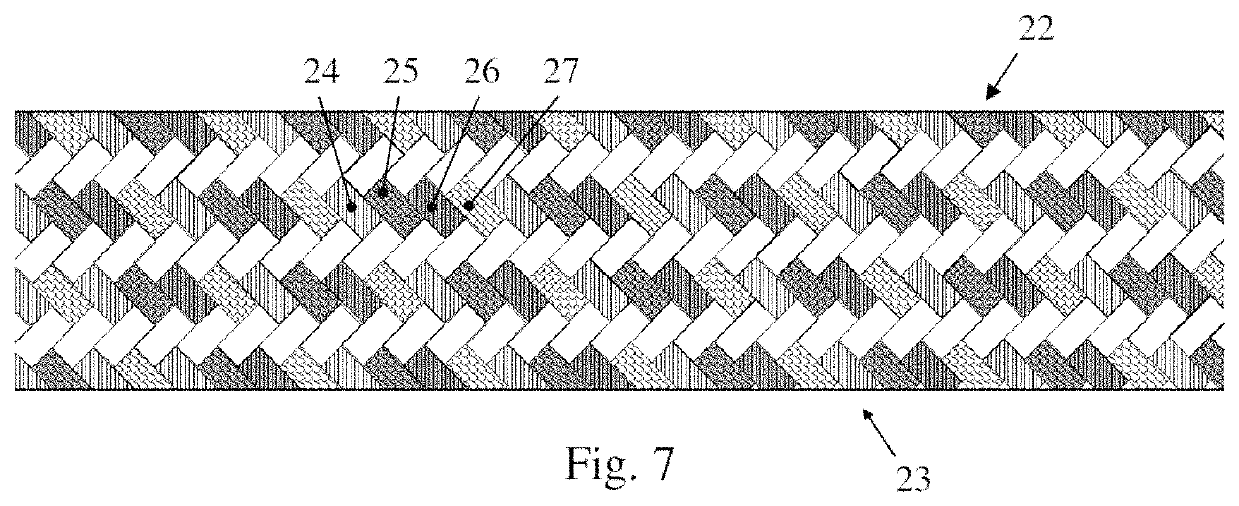High-strength fibre rope for hoisting equipment such as cranes
a high-strength, fibre-based technology, applied in the direction of textile cables, transportation and packaging, textiles and paper, etc., can solve the problems of onset of a replacement state of wear, inability to measure the replacement state of wear of high-strength fibre ropes, and no longer provided safety during further operation. achieve the effect of reliable and precise determination
- Summary
- Abstract
- Description
- Claims
- Application Information
AI Technical Summary
Benefits of technology
Problems solved by technology
Method used
Image
Examples
Embodiment Construction
[0069]FIGS. 1 to 7 each show a detail of a design variant of a high-strength fibre rope according to the invention. Each of the high-strength fibre ropes is formed from a rope core, which is not visible in FIGS. 1 to 7, and a sheathing surrounding the rope core, wherein the sheathing is formed directly around said rope core or, optionally, can be spaced apart therefrom by an interlayer. The rope core can assume the entire indicated tensile strength of the fibre rope. In particular, said sheathing may form the outer sheath of the fibre rope and acts especially only as a support and as a protection for the rope core. The sheathing comprises an outermost sheath layer which is formed from braided 1TUEs, whereby a rhombus-shaped braiding pattern is formed. The 1TUEs and / or, if provided, the 2TUEs differ from each other in their textile structures, resulting in wear resistances of the subunits which are different in each case, from which the state of wear of the rope can be detected optic...
PUM
| Property | Measurement | Unit |
|---|---|---|
| strength | aaaaa | aaaaa |
| wear resistances | aaaaa | aaaaa |
| braid angle | aaaaa | aaaaa |
Abstract
Description
Claims
Application Information
 Login to View More
Login to View More - R&D
- Intellectual Property
- Life Sciences
- Materials
- Tech Scout
- Unparalleled Data Quality
- Higher Quality Content
- 60% Fewer Hallucinations
Browse by: Latest US Patents, China's latest patents, Technical Efficacy Thesaurus, Application Domain, Technology Topic, Popular Technical Reports.
© 2025 PatSnap. All rights reserved.Legal|Privacy policy|Modern Slavery Act Transparency Statement|Sitemap|About US| Contact US: help@patsnap.com



